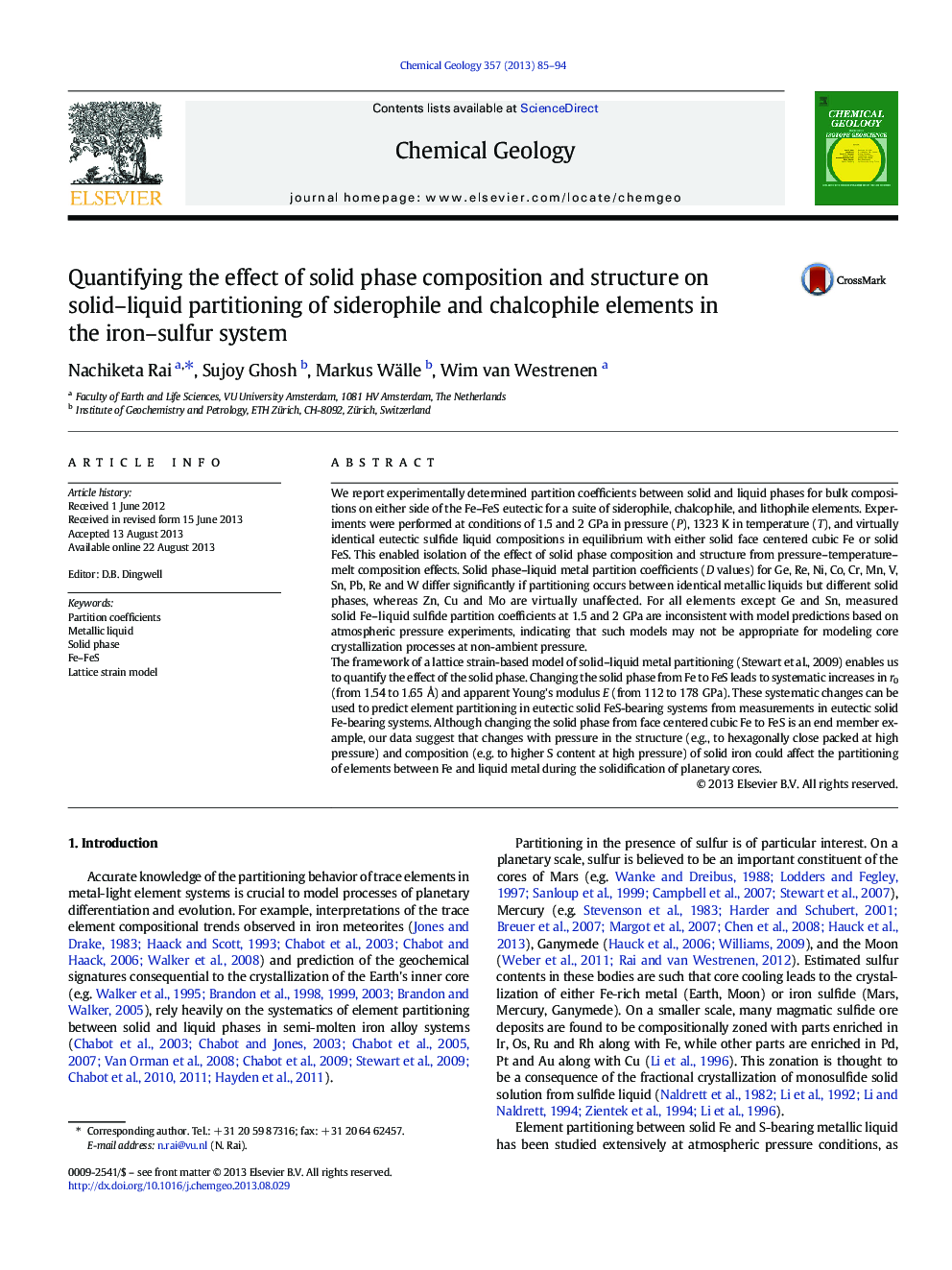| کد مقاله | کد نشریه | سال انتشار | مقاله انگلیسی | نسخه تمام متن |
|---|---|---|---|---|
| 6436865 | 1637612 | 2013 | 10 صفحه PDF | دانلود رایگان |

- We report element partitioning between molten Fe-rich metal and both Fe and FeS solids at high pressure.
- We find predictive models of Fe-liquid partitioning in the Fe-S system to fail at high pressure.
- We show that the crystal Lattice Strain Model previously shown to work for solid Fe also works for solid FeS.
- We find a clear link, through the crystal Lattice Strain Model, between the Fe-liquid and FeS-liquid partitioning.
We report experimentally determined partition coefficients between solid and liquid phases for bulk compositions on either side of the Fe-FeS eutectic for a suite of siderophile, chalcophile, and lithophile elements. Experiments were performed at conditions of 1.5 and 2Â GPa in pressure (P), 1323Â K in temperature (T), and virtually identical eutectic sulfide liquid compositions in equilibrium with either solid face centered cubic Fe or solid FeS. This enabled isolation of the effect of solid phase composition and structure from pressure-temperature-melt composition effects. Solid phase-liquid metal partition coefficients (D values) for Ge, Re, Ni, Co, Cr, Mn, V, Sn, Pb, Re and W differ significantly if partitioning occurs between identical metallic liquids but different solid phases, whereas Zn, Cu and Mo are virtually unaffected. For all elements except Ge and Sn, measured solid Fe-liquid sulfide partition coefficients at 1.5 and 2Â GPa are inconsistent with model predictions based on atmospheric pressure experiments, indicating that such models may not be appropriate for modeling core crystallization processes at non-ambient pressure.The framework of a lattice strain-based model of solid-liquid metal partitioning (Stewart et al., 2009) enables us to quantify the effect of the solid phase. Changing the solid phase from Fe to FeS leads to systematic increases in r0 (from 1.54 to 1.65Â Ã ) and apparent Young's modulus E (from 112 to 178Â GPa). These systematic changes can be used to predict element partitioning in eutectic solid FeS-bearing systems from measurements in eutectic solid Fe-bearing systems. Although changing the solid phase from face centered cubic Fe to FeS is an end member example, our data suggest that changes with pressure in the structure (e.g., to hexagonally close packed at high pressure) and composition (e.g. to higher S content at high pressure) of solid iron could affect the partitioning of elements between Fe and liquid metal during the solidification of planetary cores.
Journal: Chemical Geology - Volume 357, 24 October 2013, Pages 85-94